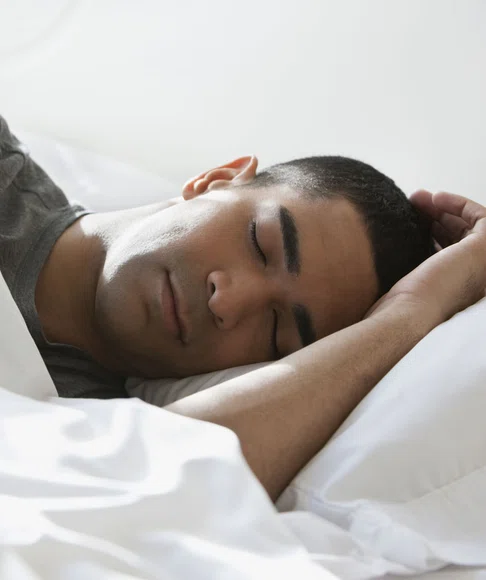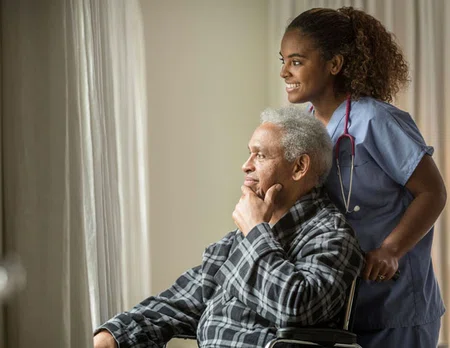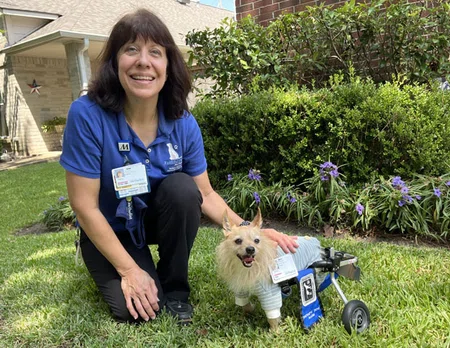© 2025. Houston Methodist, Houston, TX. All rights reserved.


In this
issue

WELCOME
NURSING SCIENCE

Holistic Care and the Use of Aromatherapy in Clinical Practice

Utilizing Music Therapy in Nursing Research
EDUCATION

Spiritual Care and Nursing Across the Houston Methodist System

Beyond Medicine: The Impact of Pet Therapy in Healthcare
PRACTICE

Narration of Care: A Bridge to Whole-Person Healing

Sweet Dreams, Sharp Minds: How Holistic Nursing and Sleep Hygiene Are Teaming Up to Tackle Delirium
PROFESSIONAL DEVELOPMENT
MAGNET
FROM OUR TEAMS

ABOUT DISCOVERN
MAGNET
Creating a Culture of Rest: Advancing Patient Sleep Through Holistic Nursing Practice
By Nicole Bender, MSN, RN, CNOR,
Magnet Program Director, Houston Methodist The Woodlands
By Nicole Bender, MSN, RN, CNOR,
Magnet Program Director, Houston Methodist The Woodlands

Concerns over poor sleep have increased nurses' curiosity to provide supportive measures for effective sleep promotion strategies that are easily accessible to deliver to patients. However, as noted by Mohedat and Somayaji (2023), significant gaps remain in patient and staff knowledge regarding best practices for sleep hygiene. These gaps contribute to suboptimal patient experiences related to restfulness during hospitalization.
Inadequate training on sleep hygiene, combined with limited use of sleep-promoting interventions, often stems from poor knowledge, negative attitudes, nurses’ perceptions of patient acuity, and the absence of standardized sleep assessment tools. Hospital noise consistently ranks among the lowest-rated domains on the HCAHPS (Hospital Consumer Assessment of Healthcare Providers and Systems) survey nationwide. Lampron and Copeland (2019) highlight that reducing nighttime noise and minimizing sleep interruptions through coordinated cluster care can significantly enhance patients' ability to achieve uninterrupted, restful sleep, leading to better patient outcomes and improved satisfaction.
Sleep Hygiene and Holistic Practice
Sleep hygiene refers to healthy habits and environmental strategies that support restful sleep. Holistic practices view sleep not just as a biological necessity, but as a vital component of healing and emotional balance. Nurses can empower patients to take an active role in their care by teaching calming bedtime routines, reducing environmental disruptions, and educating them on non-pharmacological techniques to improve sleep quality. Moreover, sleep hygiene enables nurses to deliver patient-centered care through meaningful connections by listening, personalizing recommendations, and respecting cultural or personal sleep rituals. It also supports health promotion and disease prevention.
According to Herscher, utilizing a nonpharmacologic sleep hygiene bundle composed of a short script with sleep hygiene prompts for patient’s preference such as having the shades closed, lights turned off, music or sounds playing, as well as a sleep package including an eye mask, earplugs, lavender scent pad, non-caffeinated tea, and signs promoting the importance of quietness at night (2021). Additionally, reducing disruptions due to vital sign checks and medication administrations led to patients falling asleep quickly and reporting more restful nights (Holleck et al., 2023).
Houston Methodist Baytown Initiative
At Houston Methodist Baytown, clinical nurses Melissa Guy, Victoria James, Karen Villarreal, Phuong Nguyen, and nurse manager Nancy Rivas piloted an initiative on three medical-surgical units. Their goal was to improve patients' sleep by implementing a project focused on enhancing sleep quality through education on using a nonpharmacologic sleep hygiene bundle. The medical-surgical nurses were asked to use a sleep hygiene checklist each night during patient rounds to support sleep preparedness and promote restful sleep practices. Additionally, patients received educational pamphlets referencing best practices to improve their sleep quality.
The following patient experience questions were used to gauge the progress of the newly implemented initiative:
- During this hospital stay, how often were you able to get the rest you needed?
- During this hospital stay, did doctors, nurses, and other hospital staff help you rest and recover?
Conclusion and Sustainability Strategy
Improving patient sleep through nurse education enhances healing, reduces complications, and boosts satisfaction, leading to higher HCAHPS scores (Mohedat et al., 2023). Changes in the workplace environment's perspective on rest and rest practices, as they relate to recovery, support holistic, patient-centered care and strengthen the nurse-patient relationship. To ensure long-term success, Melissa Guy, Victoria James, Karen Villarreal, Phuong Nguyen and Nancy Rivas created a sustainability strategy incorporating periodic re-education and dedicated education for new hires and flex nurses assigned to the unit. This approach maintains consistency in practice, reinforces key interventions, and ensures staff are confident and competent to support a restful hospital environment. The project has heightened staff awareness and accountability regarding the importance of promoting and maintaining a restful environment, further supporting the unparalleled care provided by the nursing teams at Houston Methodist Baytown.
Acknowledgements:
Melissa Guy, RN
Clinical Nurse
Houston Methodist Baytown Nursing Unit - Unit 5
Victoria James, RN
Clinical Nurse
Houston Methodist Baytown Nursing Unit - 2 North
Karen Villarreal, RN
Clinical Nurse
Houston Methodist Baytown Nursing Unit - Unit 4
Phuong Nguyen, RN
Clinical Nurse
Houston Methodist Baytown Nursing Unit - 2 North
Nancy Rivas, RN
Nurse Manager
Houston Methodist Baytown Nursing Unit - Unity 5
References:
Herscher, M., Mikhaylov, D., Barazani, S., Sastow, D., Yeo, I., Dunn, A. S., & Cho, H. J. (2021). A sleep hygiene intervention to improve sleep quality for hospitalized patients. The Joint Commission Journal on Quality and Patient Safety, 47(6), 343–346. https://doi.org/10.1016/j.jcjq.2021.02.003
Holleck, M. E., Tikkanen, K., Holleck, J. L., Frank, C., Falco, N., Cosentino, D., & Chang, J. J. (2023). Reducing nighttime interruptions and improving sleep for hospitalized patients by restructuring nighttime clinical workflow. Journal of General Internal Medicine, 38(9), 2091–2097. https://doi.org/10.1007/s11606-022-08005-2
Lampron, S., & Copeland, D. (2019). Using a sleep protocol to limit sleep interruptions on a medical-surgical unit. JONA: The Journal of Nursing Administration, 49(7/8), 350–353. https://doi.org/10.1097/nna.0000000000000766
Mohedat, H., & Somayaji, D. (2023). Promoting sleep in hospitals: An integrative review of nurses’ attitudes, knowledge, and practices. Journal of Advanced Nursing, 79(8), 2815–2829. https://doi.org/10.1111/jan.15694










